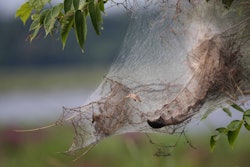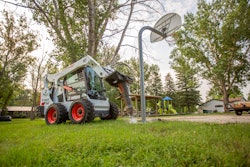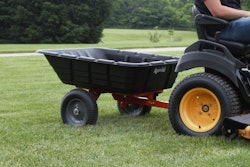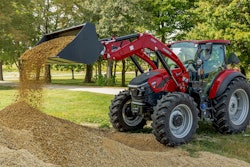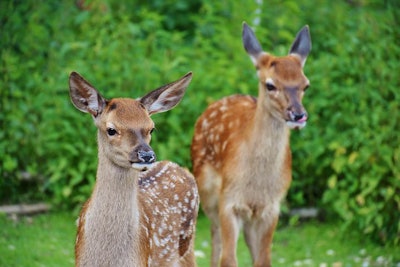 Photo: Pixabay
Photo: PixabayIn springtime, deer are able to find more than enough food, but as the cooler weather sets in, they may take to roaming through your customer’s yard for a tasty treat.
While you can’t completely deer-proof a yard without installing tall fences or other types of barriers, you can bring in plant options that deer won’t be as attracted to.
To keep their lawn looking beautiful but unappetizing to Bambi and his crew, take a look at a few deer-resistant options you can incorporate in your client’s landscape.
Deer-resistance
First of all, deer-resistant does not mean deer-proof. As previously mentioned, the only way to actually deer-proof your customer’s landscape is to put up barriers around the area.
There are different levels of deer-resistance in plants, according to Rutgers, and the grading system is as follows:
- A = Rarely damaged
- B = Seldom severely damaged
- C = Occasionally severely damaged
- D = Frequently severely damaged
Rutgers recommends selecting plants that are in the A or B categories if you know your customers will come in contact with deer.
To find a full list of options in each category, click here.
When checking for the tell-tale signs of a deer visitation, check plants for jagged or torn places on plants. These will differ from the chewing signs of rodents and rabbits, which is clean cut. Also, keep in mind that deer tend to feed higher on the plant than other animals.
If food sources such as fruit and vegetables are scarce, deer will resort to eating trees, shrubs and occasionally grass. Feeding like this can cause permanent damage to your customer’s young shrubs and trees if the feeding is extensive.
Take a look at a few ideas on different deer-resistant perennials, shrubs, groundcovers and annuals you can offer your customer.
Perennials
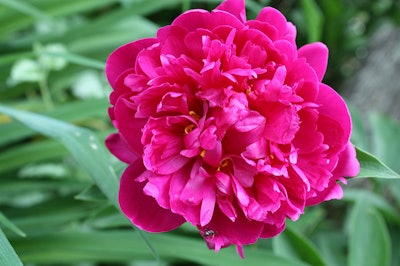 Peony
PeonyPhoto: madaise/Flickr
Peonies (Paeonia spp.) are usually enjoyed because of their large, fragrant blossoms and their eye-catching look. They are known for their long lives and are pest-proof, as deer and other pests are deterred by their strong scent. These flowers thrive in USDA Hardiness Zones 2-8.
Russian sage (Perovskia atriplicifolia) is eye-catching in a landscape and is helpful for filling in open areas throughout the yard. In the summer, the plant will produce lavender-blue flowers on taller stalks, which could last well into October. These plants thrive in USDA Hardiness Zones 5-9.
Shrubs
English boxwoods (Buxus sempervirens) are some of the most versatile broadleaf evergreens when implementing deer-resisting practices. They come in multiple shapes and sizes, and they can make ideal borders, topiaries and hedges. Because of the glossy, green foliage and strong scent, deer generally dislike these plants. They thrive in USDA Hardiness Zones 4-8.
Juniper (Juniperus spp.) can be used for many different things in a landscape, including as accent plants or groundcovers. Because of the volatile oils in their needles, deer are typically repelled by junipers. These plants are also drought tolerant and have fewer pests. These plants thrive in USDA Hardiness Zones 3-7.
Groundcovers
Deer typically ignore most ferns, so adding in Japanese painted ferns (Athyrium niponicum) is a good way to add some ground covering to an area. This is a low-growing variety that features silvery-gray fronds that have mauve and green mixed in. These ferns hold their color all season and aren’t too aggressive with their spreading. They thrive in USDA Hardiness Zones 4-9.
Lily of the valley (Convallaria majalis) is a shade-loving, eye-catching and dainty plant that goes well in most areas of the landscape. These bell-shaped flowers are fragrant in the early spring, and after flowering, they can produce red berries. These plants thrive in USDA Hardiness Zones 2-9.
Annuals
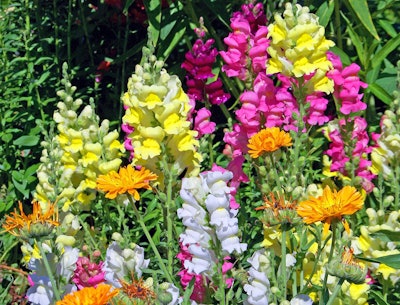 Snapdragons
SnapdragonsPhoto: Pixabay
Garden verbena (Verbena) will bloom out into attractive and deer-resistant blooms from spring until frost sets in if it’s trimmed back in midsummer. These tiny clusters come in a range of colors including purple, dark red, lavender, white, pink, blue, yellow and multi-colored.
Snapdragons (Antirrhinum majus) come in a wide variety of bright colors as well, which makes them an excellent addition to a deer-resistant garden. Snapdragons will bloom exceptionally in the cooler weather of spring and fall, and they also have a wide variety of cultivars.



